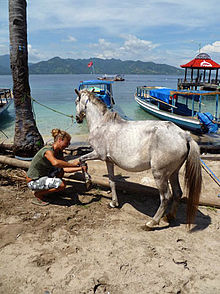
Lombok is an island in West Nusa Tenggara province, Indonesia. It forms part of the chain of the Lesser Sunda Islands, with the Lombok Strait separating it from Bali to the west and the Alas Strait between it and Sumbawa to the east. It is roughly circular, with a "tail" to the southwest, about 70 kilometres across and a total area of about 4,738.65 square kilometres including smaller offshore islands. The provincial capital and largest city on the island is Mataram.
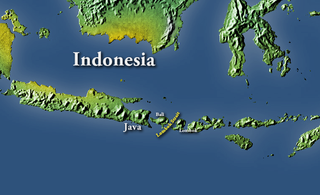
The Lombok Strait, is a strait connecting the Java Sea to the Indian Ocean, and is located between the islands of Bali and Lombok in Indonesia. The Gili Islands are on the Lombok side.

Roatán is an island in the Caribbean, about 65 kilometres (40 mi) off the northern coast of Honduras. It is located between the islands of Utila and Guanaja, and is the largest of the Bay Islands of Honduras. The island was formerly known in English as Ruatan and Rattan.

An artificial reef is a human-created underwater structure, typically built to promote marine life in areas with a generally featureless bottom, to control erosion, block ship passage, block the use of trawling nets, or improve surfing.

The Gili Islands are an archipelago of three small islands or Gili island triplets — Gili Trawangan, Gili Meno and Gili Air — just off the northwest coast of Lombok, Indonesia. The local name of these three islands is Gili Indah which means "small beautiful islands".

Southeast Asian coral reefs have the highest levels of biodiversity for the world's marine ecosystems. They serve many functions, such as forming the livelihood for subsistence fishermen and even function as jewelry and construction materials. Corals inhabit coastal waters off of every continent except Antarctica, with an abundance of reefs residing along Southeast Asian coastline in several countries including Indonesia, the Philippines, and Thailand. Coral reefs are developed by the carbonate-based skeletons of a variety of animals and algae. Slowly and overtime, the reefs build up to the surface in oceans. Coral reefs are found in shallow, warm salt water. The sunlight filters through clear water and allows microscopic organisms to live and reproduce. Coral reefs are actually composed of tiny, fragile animals known as coral polyps. Coral reefs are significantly important because of the biodiversity. Although the number of fish are decreasing, the remaining coral reefs contain more unique sea creatures. The variety of species living on a coral reef is greater than anywhere else in the world. An estimation of 70-90% of fish caught are dependent on coral reefs in Southeast Asia and reefs support over 25% of all known marine species. However, those sensitive coral reefs are facing detrimental effects on them due to variety of factors: overfishing, sedimentation and pollution, bleaching, and even tourist-related damage.

Blast fishing, fish bombing, dynamite fishing or grenade fishing is a destructive fishing practice using explosives to stun or kill schools of fish for easy collection. This often illegal practice is extremely destructive to the surrounding ecosystem, as the explosion often destroys the underlying habitat that supports the fish. The frequently improvised nature of the explosives used, and undetonated charges, means danger for fishermen and divers as well, with accidents and injuries.

The Tubbataha Natural Park, also known as the Tubbataha Reefs Natural Park, is a protected area of the Philippines located in the middle of the Sulu Sea. The marine and bird sanctuary consists of two huge atolls and the smaller Jessie Beazley Reef covering a total area of 97,030 hectares. It is located 150 kilometres (93 mi) southeast of Puerto Princesa, the capital of Palawan. The uninhabited islands and reefs are part of the island municipality of Cagayancillo, located roughly 130 kilometers (81 mi) to the northeast of the reef.

Apo Island is a volcanic island covering 74 hectares in land area, 7 kilometers off the southeastern tip of Negros Island and 30 kilometers south of the Negros Oriental capital of Dumaguete in the Philippines. The name "Apo" means "elder" or "respected ancestor" in the Visayan languages.
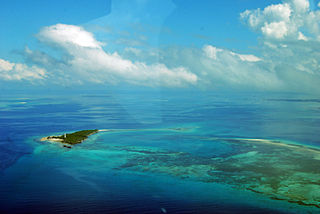
Chumbe Island is a small privately owned island a few kilometres off the main island of Zanzibar, known for its ecological innovation and exceptional coral reefs.
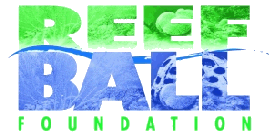
Reef Ball Foundation, Inc. is a 501(c)(3) non-profit organization that functions as an international environmental non-governmental organization. The foundation uses reef ball artificial reef technology, combined with coral propagation, transplant technology, public education, and community training to build, restore and protect coral reefs. The foundation has established "reef ball reefs" in 59 countries. Over 550,000 reef balls have been deployed in more than 4,000 projects.

Coral reef protection is the process of modifying human activities to avoid damage to healthy coral reefs and to help damaged reefs recover. The key strategies used in reef protection include defining measurable goals and introducing active management and community involvement to reduce stressors that damage reef health. One management technique is to create Marine Protected Areas (MPAs) that directly limit human activities such as fishing.

Bunaken National Park is a marine park in the north of Sulawesi island, Indonesia. The park is located near the centre of the Coral Triangle, providing habitat to 390 species of coral as well as many fish, mollusc, reptile and marine mammal species. The park is representative of Indonesian tropical water ecosystems, consisting of seagrass plain, coral reef, and coastal ecosystems.

The Cancún Underwater Museum is a non-profit organization based in Cancún, Mexico devoted to the art of conservation. The museum has a total of 500 sculptures, by a series of international and local sculptors, with three different galleries submerged between three and six meters deep in the ocean at the Cancún National Marine Park. The museum was thought up by Marine Park Director Jaime González Cano, with the objective of saving the nearby coral reefs by providing an alternative destination for divers. It was started in 2009 and officially opened in November 2010.
Jason deCaires Taylor is a British sculptor and creator of the world's first underwater sculpture park – the Molinere Underwater Sculpture Park – and underwater museum – Cancún Underwater Museum. He is best known for installing site-specific underwater sculptures that develop into artificial coral reefs, which local communities and marine life depend on. Taylor integrates his skills as a sculptor, marine conservationist, underwater photographer and scuba diving instructor into each of his projects. By using a fusion of Land Art traditions and subtly integrating aspects of street art, Taylor produces dynamic sculptural works that are installed on the ocean floor to encourage marine life, to promote ocean conservation and to highlight the current climate crisis.
Joey Foster Ellis is a functional artist and craftsman and a native of Auburn, New York who received his BFA from Central Academy of Fine Arts (CAFA) in 2009, becoming its first American graduate. His work has been exhibited extensively throughout Asia and North America and can be found in numerous private collections including Secretary of State Hillary Clinton and former United States President George W. Bush. He has received several site-specific commissions, including Greenpeace, Bank of America, Chevron and Manulife and his work has been featured in such publications as The New York Times, The Wall Street Journal, Time and Newsweek. Ellis is a recipient of the 2010 TEDGlobal Fellowship and was selected by The Renwick Gallery of the Smithsonian American Art Museum as one of 40 Under 40, a major exhibition highlighting the work of forty artists born since 1972.

A resort island is a hotel complex located on an island; in many cases one luxury hotel may own the entire island. More broadly, resort island can be defined as any island or an archipelago that contains resorts, hotels, overwater bungalows, restaurants, tourist attractions and its amenities, and might offer all-inclusive accommodations. It primary focus on tourism services and offer leisure, adventure, and amusement opportunities.
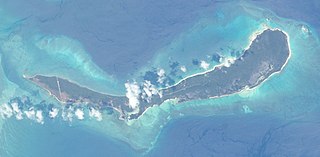
Vamizi Island is situated in the far north of Mozambique in the Quirimbas Archipelago. The island is recognised as one of the leading luxury private islands and conservation projects in East Africa and the Indian Ocean.
Sisters’ Islands Marine Park is a 400,000 square metre(40ha) marine park located in Southern Islands planning area, Singapore, which was designated a marine protected area (MPA) by the Government of Maritime and Port Authority of Singapore in 2014. The park encompasses the land and waters surrounding Sisters' Islands, and also covers the western coasts of both St John's Island and Pulau Tekukor.

An electric reef is an artificial reef made from biorock, being limestone that forms rapidly in seawater on a metal structure from dissolved minerals in the presence of a small electric current. The first reefs of this type were created by Wolf Hilbertz and Thomas J. Goreau in the 1980s. By 2011 there were examples in over 20 countries.








